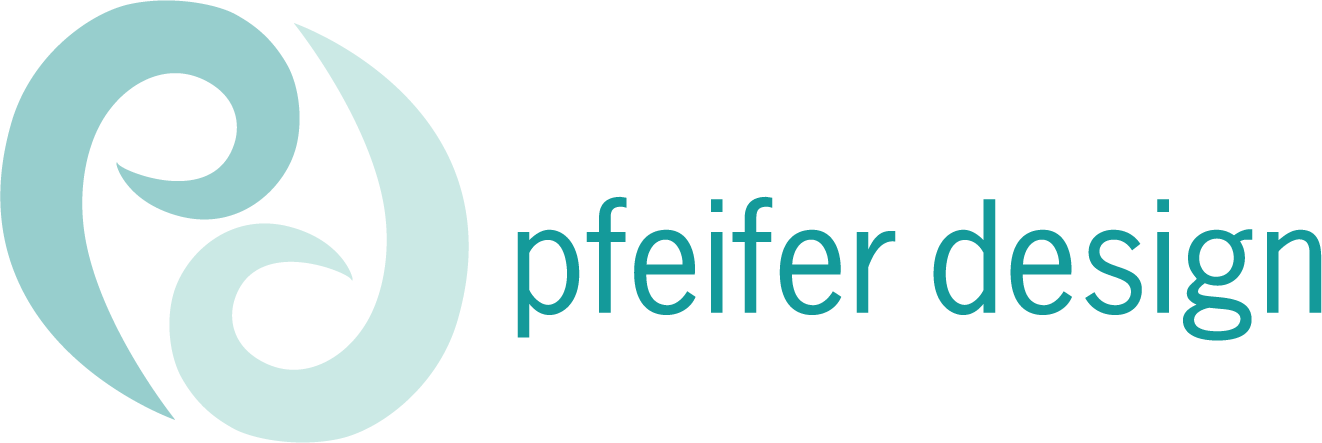A Client’s Guide for Collaborating with Graphic Designers
For many, working with a graphic designer is new territory. Branding what now? Vector huh? Establishing clear and productive communication is the key to achieving the desired outcomes. Here's a quick guide to how we can communicate effectively on your next project:
Clearly Define Your Objectives: Begin by articulating your goals and what you aim to achieve with the design project. Whether it's a new logo, website design, or marketing materials, clearly outline your expectations. For example, if you're redesigning your website, clarify if the focus is on attracting more customers, increasing sales, or telling your brand story. This sets the stage for the overall purpose and significance of the design work - why you are doing this project, and what you hope to achieve. The clearer you are about your objectives, the better the designer can understand and deliver on your vision.
Provide Detailed Briefs: A detailed project brief goes a long way. Include specifics about your target audience, brand guidelines, preferred style, and any essential content. The more details you provide, the better the designer can understand your vision. If there are any aspects that need further clarification or if you require assistance in articulating specific details, don't hesitate to reach out to your designer for help. Establishing a clear understanding of your brand from the outset paves the way for a more seamless and aligned design process.
In a detailed brief, a client might also include:
Competitor Insights: Information about competitors' designs and what elements the client wants to differentiate or emulate.
Preferred Color Palette: Specific colors or color schemes that align with the brand and its values. (you don’t have to know all of this from the onset, and your designer will contribute, but if you have something specific in your mind at the start, share and discuss. Or if you have a brand style guide with predetermined mandatory elements, share this with your designer).
Design Elements: Any specific imagery, symbols, or icons that should be incorporated into the design.
Messaging Tone: Guidelines on the desired tone or voice to be conveyed through the design.
Budget and Timeline: Clear information about budget constraints and desired project timelines.
Usage and Application: How and where the design will be used (e.g., online, print, merchandise) and any specific requirements for each platform.
Success Metrics: Desired outcomes or key performance indicators that will determine the success of the design project.
Be Open to Collaboration: Communication is a two-way street. Encourage an open dialogue and be receptive to the designer's input. Their expertise can bring fresh perspectives and innovative solutions to the table. Here’s an example: if your initial idea for a logo focuses heavily on intricate details, the designer might propose a simplified version that maintains your brand identity while ensuring better scalability and versatility. Embracing such collaborative insights can result in designs that not only meet but exceed your expectations.
Here’s an example of a mood board that served as inspiration and a conversation starter for a brand identity. It helped establish the tone, style, and thoughts around what we wanted the brand to convey.
Visual Examples Speak Louder: If you have specific design elements or styles in mind, providing visual references can bridge the gap between words and visual concepts. Sharing examples or mood boards can better convey your ideas. It’s fine to show things that appeal to you that are not within your specific realm of work. What’s important is to share your likes and dislikes, and get the dialogue going.
Offer Constructive Feedback: When reviewing initial drafts, provide constructive feedback. Instead of saying, "I don't like it," explain what aspects aren't aligning with your vision. Specific feedback helps the designer adjust more accurately.
Respect Timelines and Realistic Expectations: Design work takes time. Establish realistic timelines and avoid rushing the creative process. Understanding the design timeline can help manage expectations on both ends. I’m a personal fan of using project management tools like Trello with clients, so we are fully transparent about various stages of the project, schedule conflicts, and due dates.
Consolidate Feedback: If multiple stakeholders are involved, consolidate their feedback before relaying it to the designer. This prevents conflicting or confusing instructions.
Understand Design Terminology: Don’t be afraid to ask for explanations regarding design terminology to better articulate your preferences. Understanding what terms like "bleed," "resolution," or "CMYK vs. RGB" mean can facilitate smoother discussions.
Trust the Designer's Expertise: While your input is invaluable, trust in the designer's skills and experience. Allow them the creative freedom to apply their expertise to the project. If you grant them creative freedom to leverage their expertise, you encourage innovative solutions and allow the project to flourish with their unique insights. Effective collaboration is a blend of your input and the designer's creative mastery.
Encourage Regular Check-Ins: Establishing a schedule for regular check-ins ensures that both parties stay on the same page throughout the project. These check-ins can be an opportunity to address any concerns, provide updates, and ensure everyone is aligned.
By adopting these communication practices, small businesses and organizations can establish a productive collaboration with graphic designers. Clear, detailed communication ensures that both parties are on the same page, leading to successful and satisfying design outcomes.
Lastly, when working with us at Pfeifer Design, think of us as part of the team. We enjoy collaborating with you and “co-creating” and want to cheer you on in celebrating your success!
If you’re looking to get started on a new design project, we can help you select the services or package that is right for you.
Please get in touch!
SUBSCRIBE TO OUR NEWSLETTER!
Get helpful tips, resources, freebies and special offers, just for you! Let’s connect! SUBSCRIBE NOW


